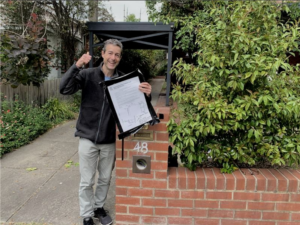By Jack Nevile and Anna-Nikol Vladimirova
Better known as “squatters’ rights,” adverse possession allows a person to be legally recognised as the owner of land they’ve possessed. Any discussion of squatters’ rights results in a great gnashing of teeth from us schmucks who foolishly paid for our homes, and sets off the imagination of every law student who knows of an empty house down the street.
What needs to be proven?
Adverse possession requires proof of actual, open and exclusive, and unauthorised possession of land for a continuous period of 15 years. This possession must not be by force, but it is irrelevant whether the rightful owner was aware of it happening.
The squatter must demonstrate they intended to possess the land. This intention element is determined based on the circumstances of each case. Paying rates and fencing the land are strong indicators, as are building on the land, planting trees or crops, or running livestock. Letting animals graze or children play on the land won’t be enough.
Case study – discontinued laneways
Melbourne is a city of laneways, famously the ones cobbled with bluestone pitchers. But much of the city had areas pencilled in for laneways around the same time that modern plumbing arrived, making sewerage collection (and laneways!) obsolete. These laneways fell into disuse and disrepair.
Our client, like most others in his street, fenced off a portion of this laneway at the rear of his property to extend his garden. He’d done so for about 30 years when the local Council sent him a letter demanding he buy it off them before they reclaimed it for themselves, making an adverse possession claim impossible.

It was much cheaper to acquire the land via adverse possession than pay the Council. The Adverse Possession claim required poring through the old Government Gazettes for the discontinuance notice, taking photos of the land, talking to neighbours, obtaining a Land Tax Certificate, our client signing a Statutory Declaration, us signing a Statutory Declaration about our research, lodging a caveat, getting a survey, lodging the Section 60 application, and a host of other things.
The whole process took about 10 months. The application was successful, if you couldn’t tell from his smile.
Rules for thee but not for me:
Not everybody is as lucky – you can’t adversely possess land owned by the government. You can’t take:
- 🏠 Crown land
- 🏠 Land owned by the Public Transport Corporation or Victorian Land Track
- 🏠 Land owned by a water authority or council
- 🏠 Land owned by the Roads Corporation or VicRoads
Disrupting Adverse Possession
If a true owner discovers that their land is in the process of becoming adversely possessed, they can disrupt the process by:
- 🏠 Having the possessor sign a Deed that they are there with your permission;
- 🏠 Ejecting the adverse possessor and re-entering the land;
- 🏠 Rejecting the adverse possessor’s acts of possession (e.g., removing an erected fence); or
- 🏠 Contacting Nevile & Co. to initiate proceedings to recover the land.
Regardless of which side of the fence you find yourself on, or if you want to check out that empty house down the street, contact our office today.
Disclaimer: This publication contains comments of a general and introductory nature only and is provided as an information service. It is not intended to be relied upon as, nor is it a substitute for specific professional legal advice. You should always speak to us and obtain legal advice before taking any action relating to matters raised in this publication.


